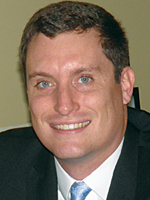Telling a special-damages story
Focus on the human elements and story to support your numbers
When we speak with other plaintiffs’ attorneys about the special damages in their case, we’re often left with the impression that it is all about the money. Certainly, our job is to maximize the monetary recovery for our client, either in settlement or through trial, but I believe that viewing special damages as purely an economic number is leaving a lot of money on the table. Done well, the storytelling that can be accomplished through special-damages evidence can make these topics the most human and compelling part of your client’s trial. In turn, the emotional response can lead to even bigger verdicts for both economic and non-economic damages. This article will provide some thoughts on how to approach economic damages from workup through trial in a manner to maximize their impact.
Pre-litigation: avoiding lien treatment
The storyline of economic damages begins long before filing of suit and the building blocks created during this time can be some of the most impactful by the end of the case. Attention to your client’s case during this time is of critical importance. The defense’s favorite storylines of attorney-referred care, lien treatment bias, and treatment gaps can all be addressed before they even begin.
We strongly prefer to try a case where the client has utilized their health insurance treaters, if available and appropriate, over the potential economics of the same treatment on a lien. In our view, even before trial, insurance-paid treatment can reduce the pressure on a case where large medical bills might otherwise impede settlement. We often net clients the largest percentage from their settlements in cases where there is no lien treatment. If the case proceeds to trial, you will have robbed the defense of two of their most potent arguments: attorney-driven medical care that is being done only to increase the value of the case and the inherent bias of healthcare providers who are motivated to make sure their lien is paid so they can cash in big money for their care.
The issue of treatment gaps can also be handled effectively. Treatment gaps can usually be avoided, which requires staying in regular contact with the client and the treaters to understand where your clients are at with treatment and getting them out to additional treatment if recommended. Another important aspect is discussing with your client the importance of seeking care when they are hurting, even if it is inconvenient, and identifying those clients who are likely to flake on their own care and staying on top of it with them. If clients are hesitant to get invasive treatment they likely need, such as injections or surgery, try to build a narrative through ongoing conservative care and have them be honest with their providers about their anxiety so that those comments make their way into the medical records and can be demonstrated in trial.
Lastly, the pre-litigation stage is a great opportunity to work with your client to develop the storytelling aspects of their special damages. You might have them (or their family) take pictures or short videos of home exercises, medical equipment they have to use, or even activities that they have modified or that cause them pain. You can start to identify witnesses and documents that explain a monetary loss, especially where there is a legitimate loss-of-wages claim. It is compelling to hear from a supervisor about a motivated client’s struggle to return to work after an injury, which bolsters both the credibility of the economic loss of earnings as well as the human story. If you start identifying and developing these witnesses before a case is even filed, you will make your job a lot easier down the line.
Discovery
In terms of discovery, we believe it is critical to ensure that most if not all of the treating healthcare providers are deposed and usually prefer to do so on video so that the testimony can be played as evidence at trial. At a baseline, you establish the facts of the medical care, that it was reasonable and necessary, the diagnosis and condition to support it, and lay the foundation for the bills and reasonableness of the bills. However, these depositions are so much deeper than that if they go well. We generally believe in contacting these treaters before the deposition to ask them a few questions about the care. This is designed mostly to get them thinking about your client again. We’ve found this helps the provider recall your client and their injuries during deposition, which tends to make their testimony more visceral than it otherwise might be. We also like to discuss with the treater detailed explanations of why they chose a particular diagnosis, treatment, and/or future recommendations. It is also a good idea to use the specific language from CACI for both past and future medical damages with these treaters, thus avoiding any unnecessary evidentiary disputes at trial.
Perhaps most importantly, ask treaters for appropriate details about the care to bring out the human aspects. For example, how painful the treatment or recovery from the treatment was, how great the relief your client felt afterwards (and perhaps how fleeting that relief was), the significant inconvenience or time committed by your client to chronic treatments like months of chiropractic care, or any number of details specific to the case. These details are again not only important to the general damages arguments that naturally flow from the medical care, but also build substantial credibility for the necessity of the medical treatment and the value of those services to your client.
Regarding loss of earnings, make sure to depose the appropriate employer-related witnesses, such as supervisors, human-resource representatives, and co-workers, to establish the foundational facts as well as the credibility of why your client either missed significant work or cannot work any longer at all. Again, intertwine significant details as to how important your client was to their workplace and the impact of their absence, establishing the value of your client’s services to the employer as a support for the loss of earnings.
Obviously, lay out the basic foundational facts of the time the client missed and the earnings they lost to date and will lose into the future if they do not return to work. Loss of earnings is one of the most credible signs of a significant injury. People generally do all they can to work as most everyone relies on their job for their economic survival and generally do all they can to work through their injuries. As such, it is an area that cannot be over-investigated during discovery in a case with legitimate wage-loss claims.
The last aspect that is often overlooked is the strength of requests for admission on special-damages topics. There are many topics in special damages that should be less controversial to a reasonable person. For that reason, requests for admission on obvious issues can put the pressure of potential cost-of-proof sanctions on the defense. Defense counsel often do our clients the favor of denying unreasonable things, which then paints them into a corner. If defendants then capitulate to the previously denied request during trial, the unreasonableness of the denial is even more obvious and sanctions become much more likely. More commonly, in our experience, defendants feel forced to fight tooth and nail things that are unreasonable, and therefore lose credibility with the jury. Many times, denials will be made earlier in a case because the defense does not want to give in on a topic too early, yet those denials are never revisited despite the fact that no evidence supporting a denial is ever revealed.
We routinely send requests asking the defense to admit that care was reasonably necessary, that the costs were reasonable (especially in insurance-paid cases), the amounts of past loss of earnings, and a variety of others depending on the specifics of the case. It is truly shocking to get a defense denial that Medicare or Medi-Cal reimbursement rates do represent the reasonable value of services, but we almost always receive these denials, which should result in sanctions because it is common knowledge that these government payor rates are on the low end of the spectrum of reimbursement. We suggest timing the RFAs after enough discovery has been done to avoid the typical defense arguments of insufficient information, but even still, it is not uncommon to have to meet-and-confer on objections or even file discovery motions.
Experts for special damages
Special-damages claims are almost always supported by expert opinion evidence. However, they do not always have to be and we suggest thinking critically about each specific item of damages you intend to claim. Specifically, what is the basic legal standard of proof that you need to support the claim, which is usually best understood by reviewing the appropriate CACI instructions and reading their annotated cases? Armed with an understanding of the required legal elements, determine what would be the most credible and simplest evidence for the jury to hear or see on that topic.
For example, in a case involving relatively straightforward past loss of earnings only, where we determined any future loss of earnings or earnings capacity would be unreasonable, we decided against designating an economist as an expert. This was done after careful consideration that our client would have to testify in some detail about the wage loss anyway, and that the client makes an incredibly trustworthy witness, so an expert was unlikely to add any substance or credibility to the evidence.
One other essential factor to consider is the costs involved in the myriad of expert witnesses that might be available versus the reasonable upside of the case. You could easily hire a billing expert on a chiropractic treatment-only MIST case, but is it a reasonable use of money to spend more on an expert than the damages you will be blackboarding? On the flip side, there are few worse feelings than being caught on the doorstep of trial with an arsenal of experts that are either poorly prepared or not right for the job. Having better experts than the other side is absolutely a factor that can play a big role in the size of the outcome at trial, so where the upside warrants it, this is not a place to scrimp.
We strongly recommend on this topic to consider each expert you are considering is going to move the ball forward on a necessary legal element of proof and how they are going to fit into the story of your case. Sometimes, you can reasonably have one expert cover multiple topics, like a medical doctor covering the reasonableness of the bills, but this must be balanced against spreading that expert too thin and potentially losing credibility that way. Getting these decisions right is so important that the discussions in our office about what specific experts to use in a given case can often last hours over several days before we feel that we came to the right conclusion.
One other tip on experts is that we rarely, if ever, hire an economist for purposes of identifying present value of the future special damages prior to the initial designation. It is the defense’s burden to prove present value if they want that reduction so there is no reason for you to do that legwork for them. In quite a large number of our cases, especially in the personal-injury side, the defense never designates an economist and therefore whatever future damages your client might be awarded should not be reduced for present value.
Having hired the right damages experts for the case, it is equally important to prepare them appropriately. Make sure they have all the materials they need to review and have actually reviewed them. In-depth pre-deposition meetings are not optional and make sure you not only ask about the opinions they have, but cross-examine your own experts on any places you feel are weak when you talk with them. We do these prep sessions far enough in advance that if the expert is not fully prepared, they have time to go back and review materials and get fully ready for deposition. This prep is also the best time to evaluate how their opinions can weave into your client’s story. Educate them about who your client is, which will help them engage with your client on a deeper level when they testify.
Trial
By the time you arrive at trial, the time-consuming leg work of your special-damages case should be well behind you, allowing for the time to be creative and think critically about how best to present the special damages in your case.
It is important at this stage to go back over your case from start to finish, the story of your client, and reassess each item of special damages you intend to pursue to make sure it fits the story. Just because you claimed loss of earnings in early written discovery does not mean you should pursue those claims at the time of trial.
You might drop certain claims because the amount of money they ultimately add up to is not worth the additional time or complication it will take at trial. Or, you may decide that certain damages claims are not strong enough to be worth making them.
Trial is a big credibility grab, and it is not worth pursuing even a large special- damages item that is not well supported. If you maintain your credibility by not engaging weak claims you do not truly believe in, you can make up those numbers elsewhere by winning on your other special-damages arguments or on general damages. We are very careful in reevaluating each item of special damages during the pre-trial prep and even in trial. If we feel a certain claim is questionable, we will only continue to pursue an uncertain claim if the circumstances make us believe that our overall credibility will not be hurt if the jurors do not buy a certain item of damages.
As you develop the special damages through trial, bring the issues to life. Ask questions of your client and the treaters about what was really involved with the treatment, what was done, how long it took, why it was performed a certain way. What were the goals and expectations of your client of treatment and how did the results of treatments make them feel afterwards? If your client explains how much relief an epidural gave them and how it returned them to their life and gave them hope, even if temporarily, you highlight the human value of that item of damages and make it less likely the jury will buy the defense attempts to cut down that value. You also paint your client in a positive light as someone who is optimistic and wants to feel better.
Similarly, if you take the time to highlight the significant training that goes into performing an injection around the spinal cord as well as the attendant risks including death and spinal-cord injury, you erode the defense claims that it is a procedure worth no more than a couple thousand bucks because it takes only a few minutes to perform. Done right, the number you ask the jury to award becomes less significant because it is so clear that the number is the truth.
One other point on special damages – we believe it is very important with each witness who testifies in support of special damages to include some sort of a demonstrative chart that summarizes the amount(s) they testified to so that there is something for the jury to see during deliberations. Do not rely on the jury taking accurate notes when it comes to the amounts you are asking them to award, and remember, they will not be able to review your closing PowerPoint in the jury room.
When it comes time to argue special damages, focus on the human elements and story to support your numbers. This also helps you tie your special damages into your general-damages arguments in a fluid and natural manner. It is important to not only tell the jury the numbers you are asking for, but also why and with specific citations to the evidence that came in during trial that supports those amounts. PowerPoint presentations are a great tool, but generally less is more. It can be a very effective presentation to put up the numbers and leave them up so that they sink in, while also talking passionately about your client’s story and the supporting evidence for those numbers. This lets the jury mostly focus on you and your passion for your client’s case which should win the day.
In conclusion, special damages are great building blocks for case value. It is easy to see these issues for the raw numerical values they represent. But, if you really take the time to develop the story behind those numbers, you can unlock much more value for your client’s case and increase the probability of a great result.
John Hinman

John Hinman is the principal of Law Offices of John S. Hinman in Long Beach, California. A graduate of Loyola University Chicago – School of Law, he has been licensed to practice in California since 2009. Mr. Hinman has devoted a large portion of his practice to medical-malpractice cases. He also handles personal injury and employment cases. He is also a 2014 graduate of the CAALA Plaintiff’s Trial Academy and was named a 2015 Rising Star by Super Lawyers Magazine.
Seth Workman

Seth Workman is the other half of Hinman Law Group, also specializing in litigation and trial of complex serious and catastrophic injury and death cases. Mr. Workman spent over six years in medical malpractice defense and now has over two years representing injured parties.
Copyright ©
2026
by the author.
For reprint permission, contact the publisher: Advocate Magazine

